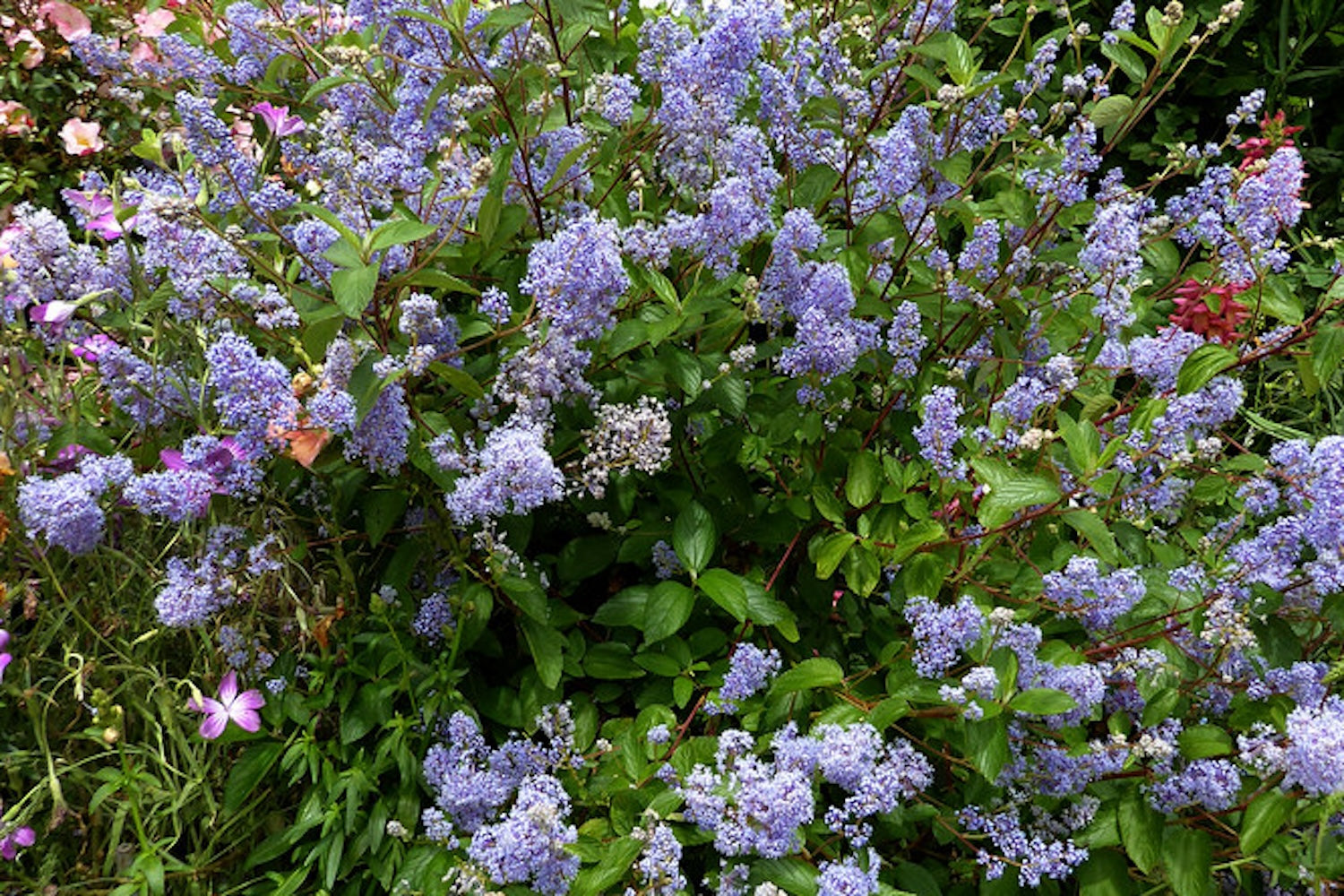Ceanothus x delileanus 'Gloire de Versailles'
Approx. 0.5 litre pot
About this cultivar:
Ceanothus x delileanus 'Gloire de Versailles' isn't your average shrub; it's a dazzling spectacle that steals the show in any garden.
With a name like 'Glory of Versailles', you know it's got some serious pedigree. Legend has it that it hails from the lush gardens of Versailles, where only the finest flora dare to bloom. Ok, I made up that legend, but why not?
This beauty struts its stuff as a deciduous shrub, though it might decide to hang onto a bit of foliage during the winter if it's feeling fancy and it is not too cold. It's not too big, not too small – just right for adding a touch of elegance to borders, mixed shrub arrangements, or even standing solo.
But let's talk about those flowers – oh, those flowers! Picture pyramids of brilliant blue blooms bursting forth in late spring or early summer, like the sky decided to throw a party in your backyard. And the fragrance? Pure magic, drawing in bees and butterflies like paparazzi to a celebrity sighting.
The species Ceanothus x delileanus was born from a passionate rendezvous between Ceanothus coeruleus and Ceanothus americanus. The hybrid name delileanus honours Alire Delile (1778-1850), French botanist and physician.
It has the RHS Award of Garden Merit.
- Position: Full sun, partial shade (better in full sun)
- Soil: Almost any soil - Grows well in Ballyrobert
-
Flowers: May, June, July, August
- Other features: Royal Horticultural Society Award of Garden Merit (RHS AGM), Bees, Butterflies, and Bugs
- Hardiness: Fully Hardy - Grows well in Ballyrobert, H4 - Hardy through most of the UK (-10 to -5°C)
- Habit: Bushy
- Foliage: Semi evergreen
- Height: 100 to 150 cm ( 3.5 - 5 ft)
- Spread: 150 to 250 cm ( 5 - 9 ft)
- Time to full growth: 5 to 10 years
- Plant type: Herbaceous Perennial, Shrub
- Colour: Blue, green
- Goes well with: Wall, Fence, border, informal hedge
About this genus:
Ceanothus is a genus of about 50–60 species of nitrogen-fixing shrubs and small trees in the buckthorn family (Rhamnaceae). Common names are buckbrush, California lilac, or soap bush. The genus name comes from keanothos, meaning ‘spiny plant’, and which was an ancient Greek name relating to some plants in the buckthorn family. It was applied by Theophrastus (371–287 BC) to an Old World plant actually believed to be Cirsium arvense (a thistle).
The genus is native to North America with the highest diversity on the western coast. The Californian species of Ceanothus are commonly known collectively as California lilacs. Other individual species have more descriptive common names such as New Jersey tea for Ceanothus americanus, as its leaves were used as a black tea substitute during the American Revolution. Serves them right for wasting all that tea in the first place.
The majority of the genus are technically evergreen, but the handful of species adapted to cold winters are deciduous. The leaves are usually opposite or alternate, small, simple, and mostly with serrated margins. The leaves have a shiny upper surface that feels gummy when pinched between the thumb and forefinger, so you will be forever pinching them like bubble wrap.
The flowers are tiny and produced in large, dense clusters. A few species are reported to be intensely fragrant almost to the point of being nauseating. They tend to bloom in spring but also summer. The flowers can vary in colour but in the ornamental garden they tend to be universally blue with some pinks and whites. The flowers mature into a dry, three-lobed seed capsule which can also be attractive. Apparently, the seeds of some species can lie dormant for hundreds of years and some species are typically dependent on forest fires to trigger germination of their seeds. Wouldn’t try this at home mind you.
Plants in this genus are widely distributed and can be found on dry, sunny hillsides from coastal scrub lands to open forest clearings, from near sea level to 9,000 feet (2,700 m) in elevation. So, in the garden what does this mean? In general, they don’t like wet but we have tried to select those cultivars which can do well in most places.
Lifecycle wise they are much like Cytisus - They are not always very hardy, may be short-lived and have a tendency to decline significantly after 5 years, and don’t respond to pruning. However! HOWEVER! They grow fast, flower profusely, and for a long time. Masses of flowers that insects love! Depending on the species they are versatile and can look particularly good grown or trained against a sunny, sheltered wall, but can also be used as border plants, informal hedges and ground cover.


